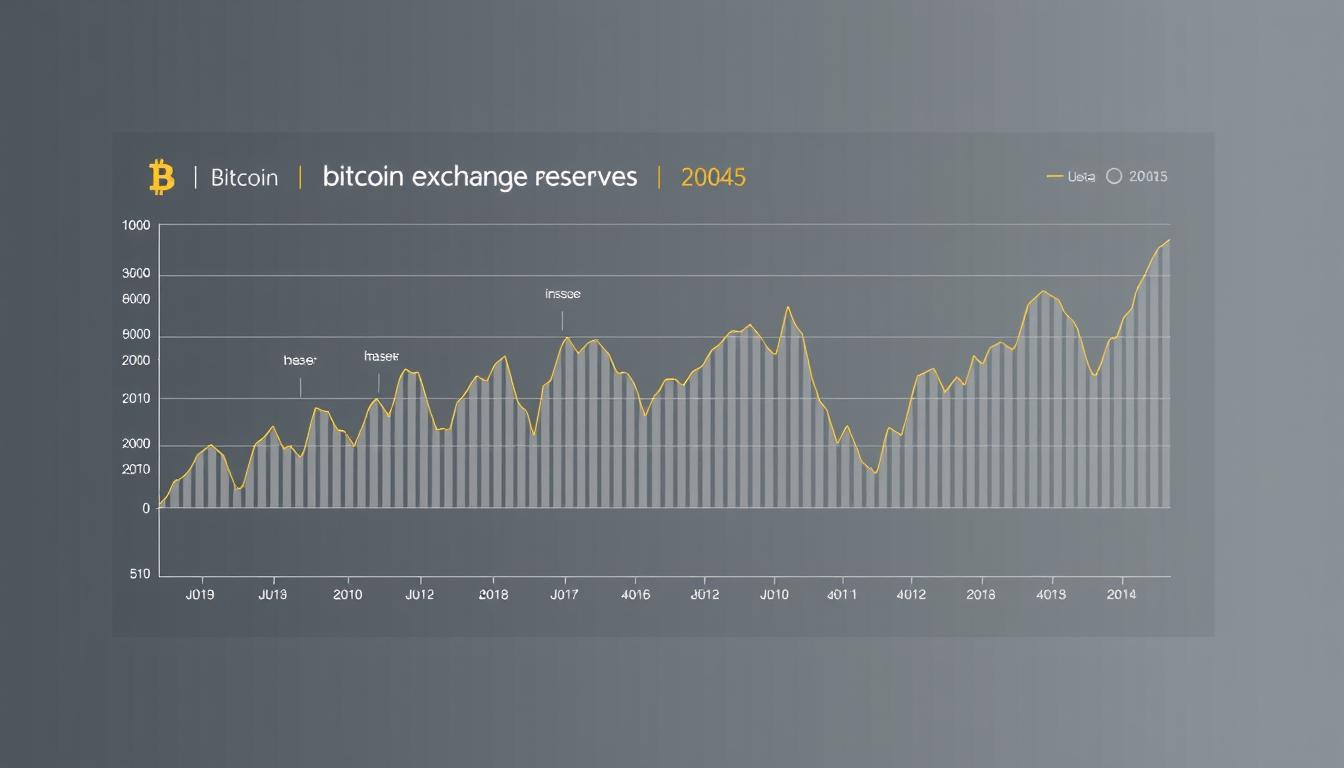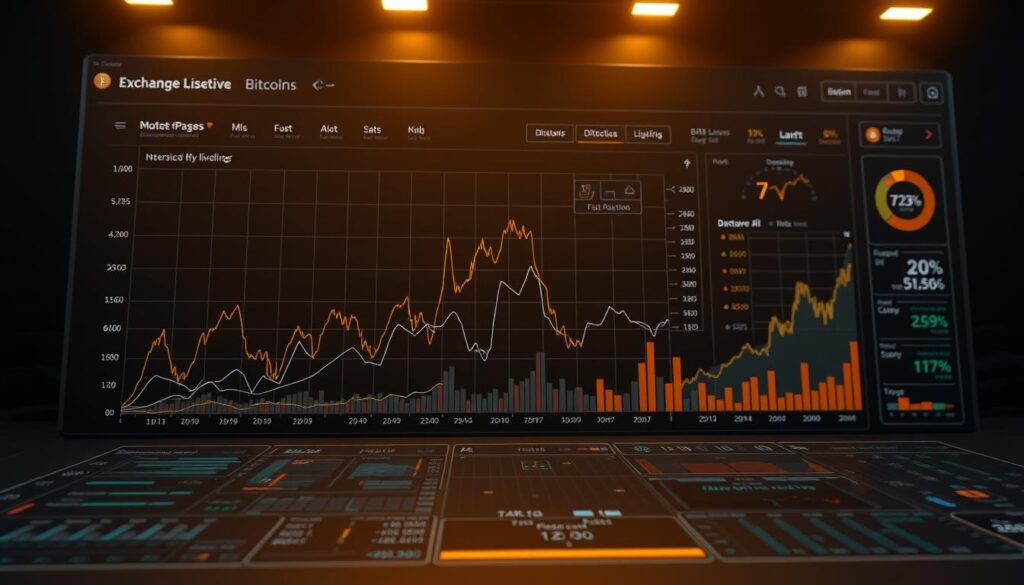Now Reading: Analyzing Bitcoin Liquidity Through Exchange Reserves
- 01
Analyzing Bitcoin Liquidity Through Exchange Reserves
Analyzing Bitcoin Liquidity Through Exchange Reserves

Understanding how digital assets move is key for anyone in the crypto space. This guide dives into a powerful tool for seeing market trends: tracking assets held on major trading platforms.
When people hold their coins on an exchange, it often signals they are ready to trade. This creates a pool of available assets, directly influencing market liquidity. High levels can mean potential selling pressure, while low levels might indicate a desire to hold long-term.
This type of analysis gives a clear window into trader sentiment. By watching the flow of assets on and off these platforms, you can spot patterns. These patterns can hint at future price moves and overall market volatility.
Our exploration will cover how to interpret these reserves and other on-chain data. We will connect this information to practical trading strategies. This knowledge helps you make smarter decisions in a fast-moving market.
Introduction to Bitcoin Liquidity and Exchange Reserves
Tracking asset flows between personal storage and trading venues provides a window into investor psychology. This movement directly impacts how easily assets can be bought or sold in the market.
Defining Exchange Reserves and Liquidity
Exchange reserves represent the total Bitcoin held on major trading platforms. When users deposit coins, these reserves grow, indicating potential selling activity.
Liquidity measures how smoothly assets trade without major price changes. High liquidity means stable trading conditions for all participants.
Contextualizing the Market Environment
The current crypto landscape shows historically low Bitcoin levels on exchanges. This suggests strong holder conviction among investors.
Recent data reveals reserves dropped to multi-year lows. This environment typically supports healthier price action with reduced selling pressure.
Understanding these metrics helps crypto participants navigate market conditions more effectively. It provides insight into overall supply dynamics for smarter trading decisions.
Understanding the Mechanics of Exchange Reserves
Daily fluctuations in platform-held assets offer valuable insights into trader behavior patterns. The constant movement between personal wallets and trading venues creates measurable market indicators.
How Deposits, Withdrawals, and Cold Storage Impact Reserves
When users deposit coins onto trading platforms, the available supply increases. This action boosts the total reserve amount available for immediate trading. Conversely, withdrawals to personal wallets reduce these holdings significantly.
Cold storage plays a crucial role in managing platform assets. Exchanges move most customer funds to secure offline storage for protection. This approach balances security needs with daily operational requirements.

Institutional activity has dramatically reshaped reserve dynamics recently. Large-scale purchases through regulated products pull substantial coin quantities into custodial storage. This effectively removes supply from active circulation.
These mechanics reveal important market signals. Sustained withdrawal patterns often indicate strong holder confidence. Deposit surges may suggest preparation for potential selling activity.
Monitoring these flows provides traders with advance warning of market moves. Understanding the timing and scale of reserve changes helps navigate volatile conditions more effectively.
Market Implications of High and Low Bitcoin Reserves
Shifting levels of platform-held coins create distinct market environments. Each scenario presents unique risks and opportunities for participants.
Understanding these conditions helps in anticipating price movements. It also aids in managing exposure during different market phases.

Price Volatility and Liquidation Cascades
When asset levels on platforms are low, the available supply for quick trades shrinks. This scarcity can lead to sharper price moves from smaller orders.
High levels of available assets increase overall liquidity. However, this also raises the risk of rapid, violent sell-offs.
Leveraged trades add another layer of complexity. Falling prices can trigger automatic sell orders from these positions.
If platform holdings are ample, these forced sales can execute quickly. This creates a cascade effect, dramatically increasing volatility in a short time.
Investor Behavior and Market Sentiment
Investor actions often signal their intent through these metrics. A rise in platform deposits may indicate preparation for selling.
Conversely, a steady withdrawal of assets suggests long-term confidence. This behavior typically correlates with bullish market sentiment.
Observing these patterns gives traders an early warning system. It helps gauge the collective mood and potential future volatility.
| Scenario | Impact on Liquidity | Primary Risk | Typical Sentiment |
|---|---|---|---|
| High Platform Holdings | Enhanced, absorbs large orders | Cascading liquidations | Caution, potential distribution |
| Low Platform Holdings | Thinner, prone to slippage | Amplified price swings | Confidence, accumulation |
Bitcoin liquidity analysis exchange reserves
Successful crypto participants often differentiate themselves through their ability to interpret complex on-chain signals. This skill becomes particularly valuable when examining platform-held assets.
Comprehensive monitoring requires systematic tracking across multiple sources. Traders should combine on-chain metrics with exchange-reported figures and third-party analytics.
The methodology involves watching both absolute levels and directional trends. Daily fluctuations reveal short-term intentions while multi-month patterns show structural shifts.

Effective examination integrates multiple data points simultaneously. This includes distribution across venues and correlations with other indicators like open interest.
Advanced practitioners use this information as a predictive tool for identifying potential liquidation events. High asset levels combined with elevated leverage create conditions for volatile price movements.
The insights extend beyond simple trading signals. They reveal market structure and the balance between different participant groups.
This approach helps assess whether price action represents genuine demand or temporary imbalances. Integrating this data with broader context significantly enhances decision-making accuracy.
Analyzing On-Chain Data and Liquidation Maps
Liquidation clusters represent zones where market volatility tends to intensify due to the mechanics of forced position closures. These areas become critical danger zones when asset prices approach concentrated leverage positions.

Utilizing Liquidation Heatmaps for Trading Edge
Sophisticated traders use heatmaps to visualize where large orders cluster at specific price levels. This information reveals potential turning points before they appear on standard charts.
When prices near these liquidation zones, market behavior becomes predictable. Large players may intentionally push markets toward these clusters to trigger cascading liquidations.
The combination of on-chain data with heatmap analysis creates a powerful framework. It helps identify whether price moves represent genuine trends or temporary imbalances.
This way of examining market structure provides clear signals for entry and exit points. It transforms abstract data into actionable trading strategies based on real market mechanics.
Assessing Liquidity Levels on Centralized Exchanges
Evaluating trading platform capacity requires examining multiple data points beyond simple trading numbers. Traders must distinguish between genuine activity and artificial volume to understand true market conditions.
The 2% depth metric serves as a key benchmark for measuring platform robustness. This figure quantifies the total value of orders within 2% of current prices, indicating capacity to absorb significant trades.
Major platforms typically maintain superior depth compared to smaller venues. This directly impacts execution quality during volatile times, making them preferred for large transactions.
Case Studies from Historical Mini-Crashes
Historical events demonstrate the importance of monitoring platform metrics. The March 2023 event provides a clear example of how conditions can deteriorate rapidly.
Forty-eight hours before prices dropped from $27,000 to under $24,000, platform holdings increased significantly. Combined with clustered liquidation zones, this created perfect conditions for cascading effects.
Over $800 million in long positions were eliminated within one day. This case shows how proper liquidity assessment could have provided warning signals.
Volume analysis extends beyond dollar amounts to examine organic versus manipulated activity. Healthy markets typically show 85-90% genuine trading, while thinner markets display lower real activity.
Evaluating Institutional Influences and ETF Impacts
The arrival of institutional capital has reshaped the fundamental landscape for digital assets. New investment vehicles, particularly spot ETFs, have introduced a powerful and sustained source of demand.
This shift moves large quantities of crypto assets away from active trading venues. The effect on available supply is significant and long-lasting.
How Spot Bitcoin ETFs Affect Exchange Reserves
Spot ETFs require actual purchases of the underlying asset. These coins are then moved into secure, long-term custodial storage.
This process continuously drains the pool of assets available for immediate trading. It creates a powerful supply squeeze mechanism.
The market becomes more sensitive to price movements when supply is constrained. Even modest buying pressure can lead to significant price appreciation.
However, this environment also increases vulnerability. A sudden shift in sentiment can cause a rapid return of assets to trading platforms.
Monitoring these flows provides critical insight. A sharp rise in platform holdings during a downturn is a major warning sign for traders.
| Market Condition | Supply Impact | Price Sensitivity | Primary Risk |
|---|---|---|---|
| Sustained ETF Inflows | Significant reduction | High appreciation potential | Low immediate liquidity |
| ETF Outflows/Reserve Increase | Rapid supply influx | High downward volatility | Cascading liquidations |
This new dynamic underscores the evolving value proposition of crypto. It attracts a different class of investors with long-term horizons.
Understanding these institutional influences is now essential for navigating modern market structure.
Comparative Review of CEX and DEX Liquidity Dynamics
Centralized and decentralized trading platforms offer contrasting solutions for market participants seeking to execute transactions. Each architecture presents unique advantages and trade-offs for different trading strategies.
Examining Market Depth and Liquidity Distribution
Major centralized venues demonstrate significant concentration in trading capacity. Binance leads with approximately $35 million available within 2% price deviation across all pairs.
Coinbase and Kraken follow with $23 million and $21 million respectively. This concentration highlights the dominance of top-tier platforms in the trading ecosystem.
Decentralized platforms have achieved remarkable maturity in their market structures. Uniswap’s major pools provide around $20 million within 2% deviation, approaching parity with centralized venues.
| Feature | CEX Advantages | DEX Advantages | Market Impact |
|---|---|---|---|
| Execution Model | Traditional order books | Automated market makers | Different price discovery |
| Liquidity Concentration | Top-heavy ($35M Binance) | Distributed pools | Varying slippage risks |
| Trading Pairs | USDT dominates ($43M) | Token-specific pools | Different asset access |
| User Experience | Instant execution | Non-custodial trading | Strategy preferences |
The convergence between platform types indicates efficient markets where price dislocations are rare. This benefits traders through more consistent execution across different venues.
Volume analysis reveals 87% organic activity for established assets like Ethereum. This represents $472 million of genuine trading volume from $546 million total.
Risk Management Through Reserve and Liquidity Metrics
Building an early warning system requires correlating futures market activity with platform asset movements. This approach helps traders anticipate potential volatility before it impacts their positions.
Combining multiple data streams creates a comprehensive view of market conditions. This multidimensional framework identifies instability points effectively.
Integrating Reserve Data with Open Interest and Leverage Metrics
Open interest tracks outstanding futures contracts across trading venues. This metric serves as a proxy for overall market leverage intensity.
The estimated leverage ratio compares open interest against platform balances. High readings indicate borrowed amounts relative to collateral.
Elevated open interest during increasing platform holdings signals dangerous conditions. Leveraged positions face heightened liquidation risk in this scenario.
| Market Condition | Open Interest Level | Platform Holdings Trend | Recommended Action |
|---|---|---|---|
| High Risk | Elevated | Increasing | Reduce exposure, hedge positions |
| Moderate Risk | Average | Stable | Monitor closely, maintain strategy |
| Low Risk | Declining | Decreasing | Consider accumulation opportunities |
Daily monitoring using platforms like CryptoQuant provides real-time trends. This routine helps identify divergences between price action and asset flows.
The timing of these signals matters critically. Changes typically lead price movements by 24-48 hours. This advance warning allows position adjustments before broader market reactions.
Conclusion
Effective market navigation hinges on understanding the subtle signals embedded in asset distribution patterns. This comprehensive guide has demonstrated how platform holdings serve as leading indicators of market behavior.
Declining asset levels typically signal accumulation phases and bullish sentiment. Rising holdings often precede distribution and increased volatility. Combining this information with leverage metrics creates actionable intelligence.
The practical value extends across all participant categories. Day traders can time entries using hourly changes. Long-term investors monitor multi-month trends for strategic accumulation.
Establishing daily monitoring routines using reliable data sources is essential. This approach replaces emotional reactions with data-driven strategies aligned with actual market conditions.
As crypto markets mature, these metrics will remain crucial for navigating evolving supply-demand dynamics. The discipline to act on these signals provides a sustainable competitive advantage.














